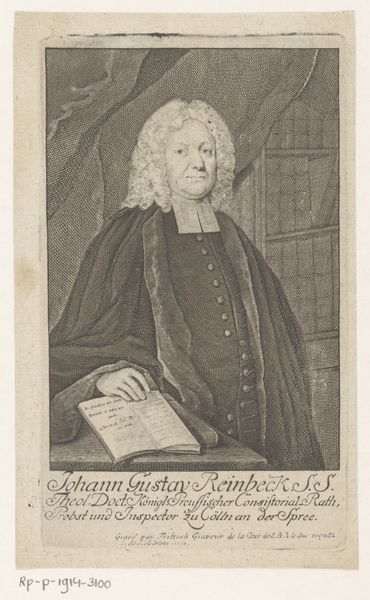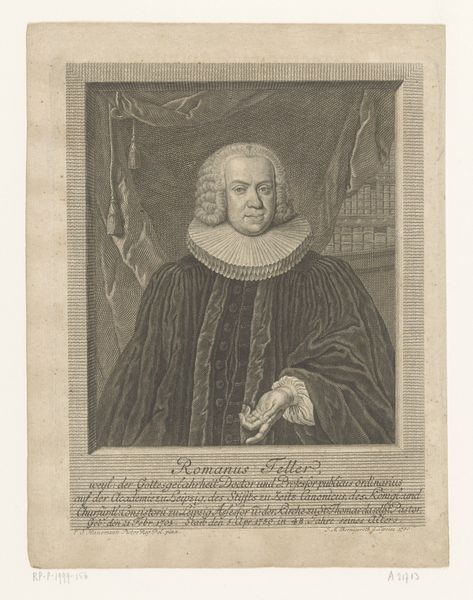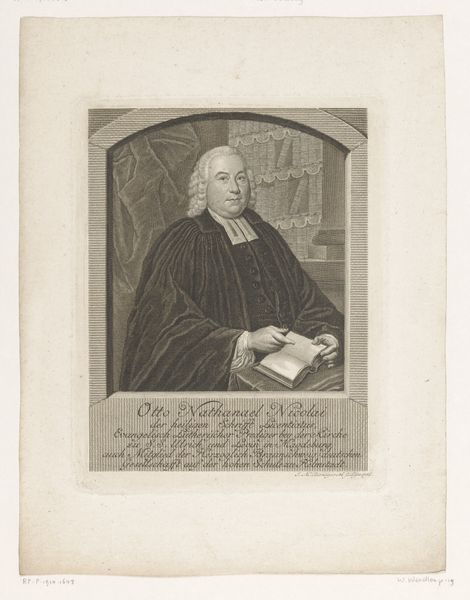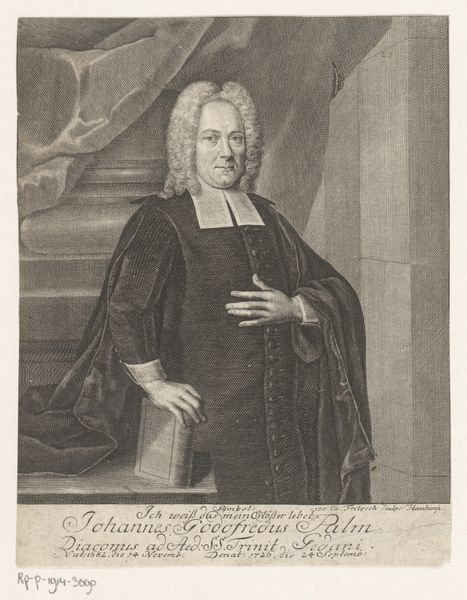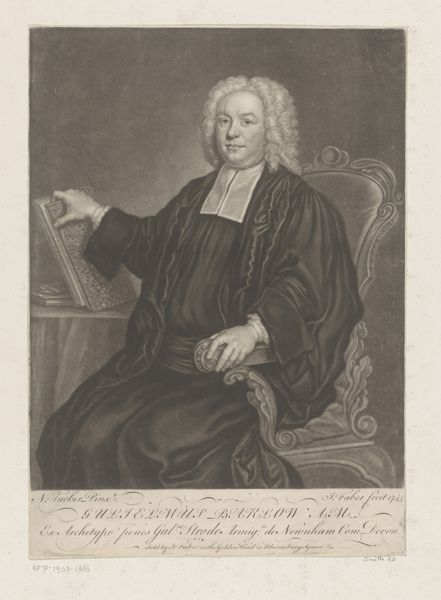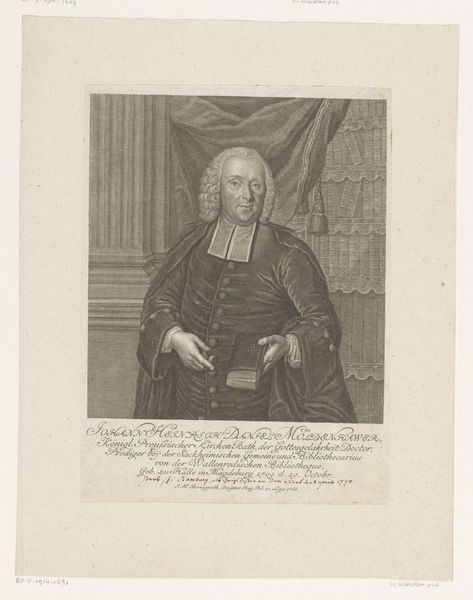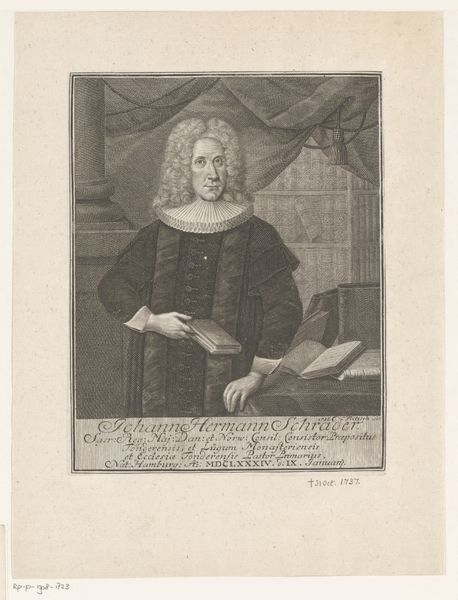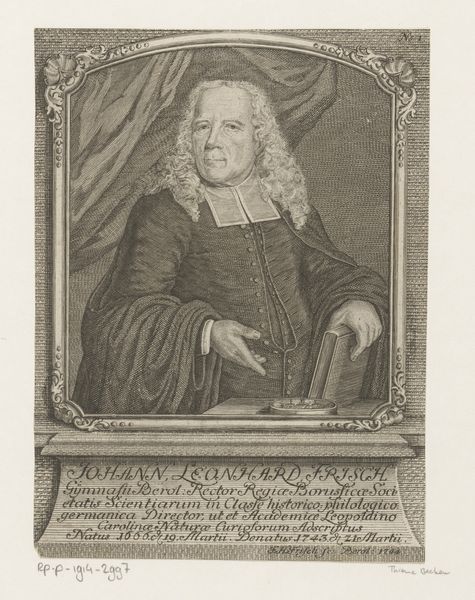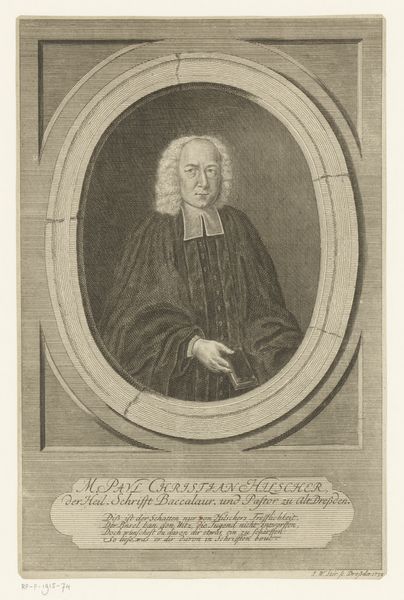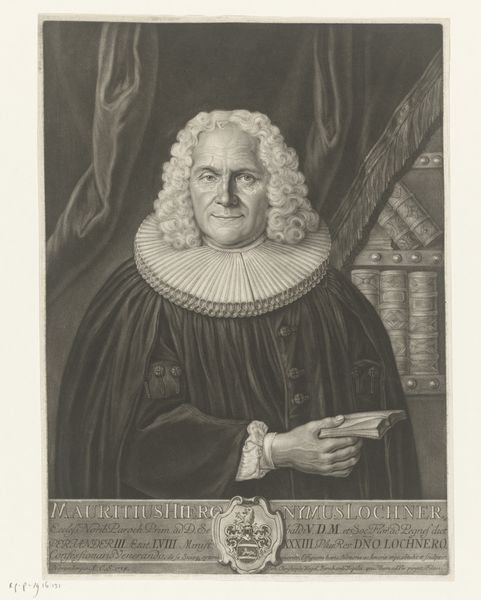
print, engraving
#
portrait
#
baroque
# print
#
history-painting
#
engraving
Dimensions: height 179 mm, width 134 mm
Copyright: Rijks Museum: Open Domain
Curator: Allow me to introduce you to "Portret van Friedrich Schultze," an engraving dating back to 1740, currently residing here at the Rijksmuseum. It's a Baroque print crafted by Johann Martin Bernigeroth. Editor: My initial impression is…serious. And rather grand, wouldn't you say? There's a certain formality to the composition; it’s staged, yet imposing, with a hint of melancholy about the eyes. Curator: Precisely. Engraving, as a printmaking process, demands precision and control, mirroring the societal emphasis on order during the Baroque era. Bernigeroth’s use of line and shadow works to carefully craft the social identity of the subject, Friedrich Schultze. Editor: The textures are fascinating for a print—the wig looks almost foamy! And the weight of that book, barely supported by his hand, adds another layer. What do you make of the curtain, dramatically swept to the side like that? Curator: The curtain and the bookcase serve as symbolic props, indicating Schultze’s profession and intellectual environment. Also the script along the bottom provides Schultze's extensive titles. Editor: It feels deliberate, like Schultze is consciously presenting himself in a specific way, surrounded by the tools and signifiers of his trade. A bit of subtle propaganda, perhaps? I wonder, what’s behind those books? What thoughts are brewing behind those thoughtful eyes? Curator: These portraits served as important markers of social standing and professional achievement in their time. Consider the networks of patronage and the skill required for these engravings; such imagery broadcasted power. Editor: That level of control – from the artist to the sitter – intrigues me. Every detail meticulously planned and executed to present a particular narrative. There’s a real artistry there. The textures feel so real! Curator: And Bernigeroth masterfully harnessed the process of engraving, etching, and line to achieve that reality and make statements that would influence viewers for centuries. It's a potent reminder of how images shape our understanding of history. Editor: Well, thinking about the social implications, power structures and image, I won't look at another 18th-century portrait in quite the same way! Thanks for lending me a new historical context!
Comments
No comments
Be the first to comment and join the conversation on the ultimate creative platform.
